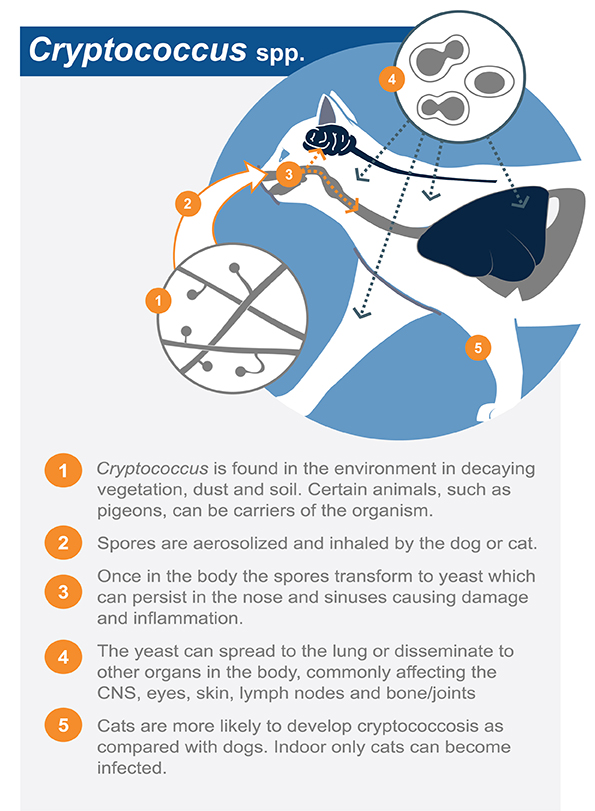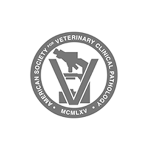What is Cryptococcosis?
Cryptococcosis, a fungal infection caused by Cryptococcus, is acquired when basidiospores are inhaled from the environment. Infection is most commonly in the nasal cavity, sinuses, and central nervous system but can also affect other parts of the body including the lungs.
Cats are more often infected as compared with dogs and even cats that never leave the house are at risk. The fungus is found around the world in tree hollows, areas with decaying wood or bird droppings, and in soil, so no area is endemic. Cryptococcus is widespread in the soil (where it grows naturally) or is deposited through bird droppings (particularly pigeons). Horses, cattle, sheep and goats may also develop cryptococcosis.









